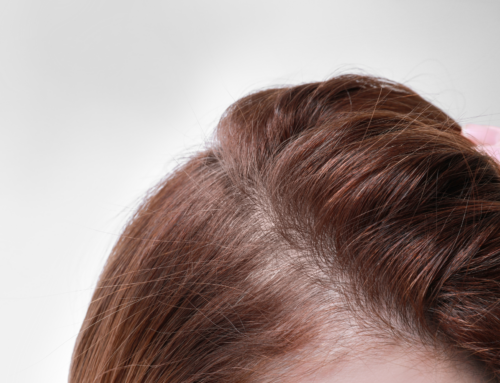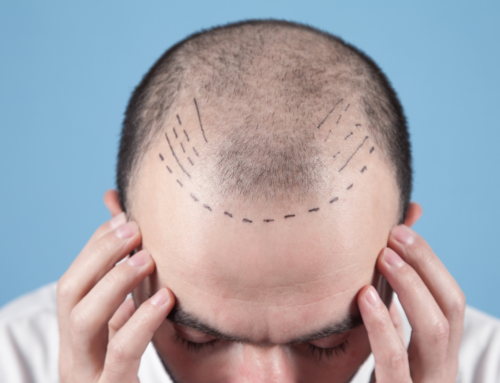
While most of us have reduced grains and gluten from our diets to keep trim, scientists are now discovering that grains may play a role in chronic inflammation and hormonal imbalance, which can lead to calcification and fibrosis in the body and scalp.
What Do Grains Have to Do with Hair Loss?
Our thyroid is key to a healthy, hormonally balanced body. A suppressed thyroid gland leads to a weak immune system, susceptibility to hormonal imbalances, and a greater chance of calcification and fibrosis.
The first (and maybe biggest) cause of chronic inflammation and suppressed thyroid function is … grains!
GMOs can partially drive low-level, systemic inflammation.
GMOs contain altered protein structures. Modified soy and corn have proteins that can induce a toxic or allergenic-like response in humans. When we ingest something that is toxic or allergenic, inflammation is the first response in the affected areas.
Studies show that overconsumption of GMOs can – through tumor generation – disrupt hormone balance, causing reproductive disorders and infertility. These are endocrine system failures, and our endocrine system is largely powered by our thyroid.
75% of processed foods contain genetically modified ingredients. One of the main sources of GMOs comes from grains.
Gluten’s Effect on the Thyroid
Gluten – a protein found in wheat, barley, and rye – can lead to an attack on our thyroid, through a component found in gluten, known as gliadin. Gliadin is a set of proteins that closely resemble our thyroid gland.
When we digest grains, the fibrous parts of the grains scrub against our intestinal walls, creating micro-tears in the cell lining. This allows for certain nutrients and minerals to seep into the bloodstream – a normal part of the digestive process. When we consume the right amount of fiber, it feeds our gut bacteria, and creates small tears in the intestinal walls, allowing for some permeability of the nutrients and minerals into the bloodstream.
However, if we eat too much fiber, it can cause damage to the intestinal walls, allowing unwanted parasites, bacteria, viruses, and larger protein molecules into our digestive tract. Gliadin is one of those proteins. Too much grain consumption increases gut permeability, creating more interaction between the bloodstream and the foods we digest. When we eat gluten-containing foods, gliadin can enter the bloodstream.
Because gliadin isn’t supposed to be in our bloodstream, our body reads it as an invader and produces antibodies to attack it. Since gliadin is so structurally similar to the thyroid gland, our body inadvertently begins to attack the thyroid tissue.
Suppression of the thyroid can lead to a form of hypothyroidism, known as Hashimoto’s, an autoimmune disorder where the thyroid is attacked by our own antibodies.
Hashimoto’s is estimated to be responsible for 90% of U.S. hypothyroid cases.
If gliadin makes its way to the bloodstream, it attacks the thyroid and increases hormonal imbalance, contributing to calcification and fibrosis, which precedes hair loss.
The best solution? reduce GMOs and watch your intake of white flour and wheat products.






